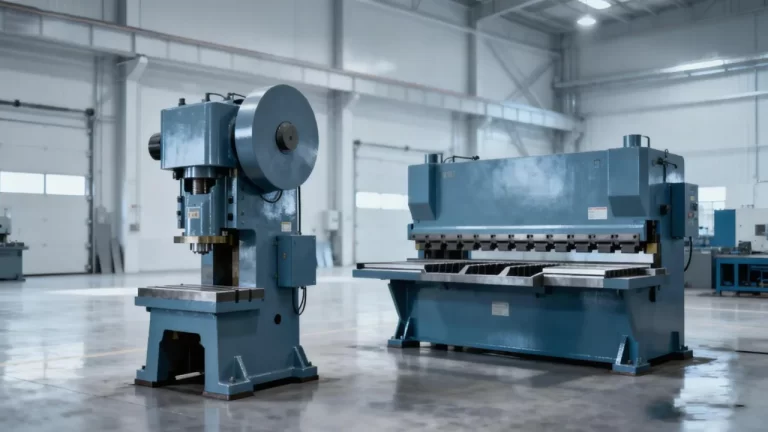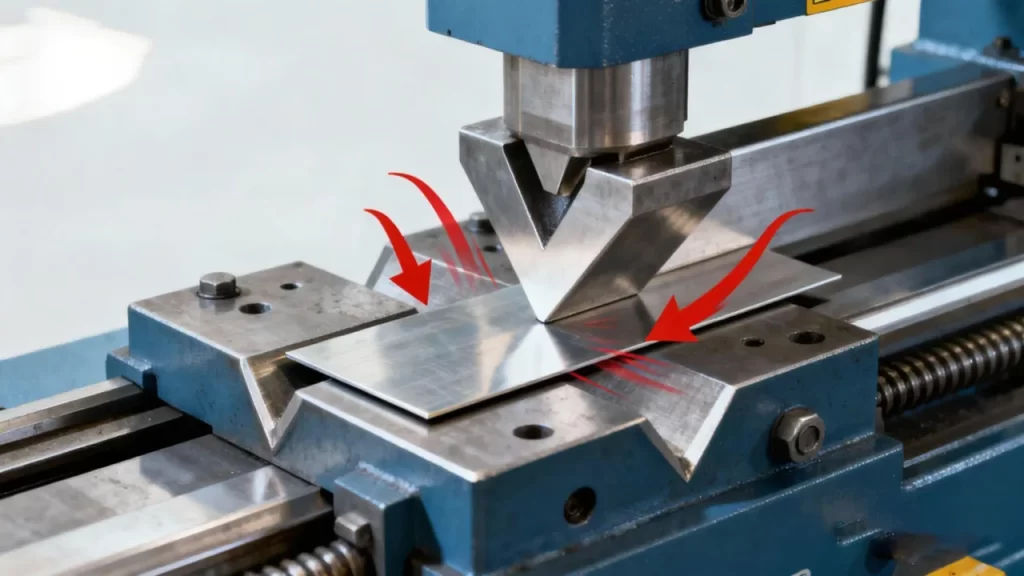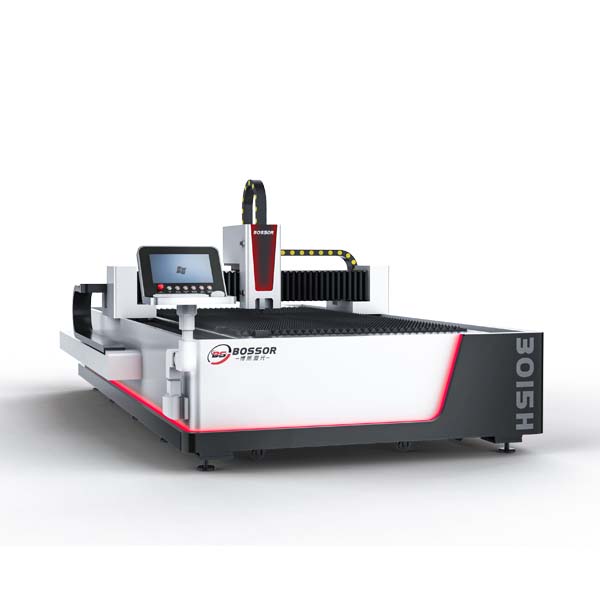
Punch Press vs Press Brake: Which Machine Fits Your Metalworking Needs?
- Conocimientos, Noticias
- 90+ reading now
Durmapress specializes in designing, manufacturing, and selling various metal processing equipment, including bending machines, shears, punches, and laser cutting machines. The company was founded in 2014, with years of experience and technology accumulation. DurmaPress has become one of the well-known brands in China's metal processing machinery industry.
In modern metal fabrication, efficiency and precision define profitability. Whether you run a small job shop or manage a large-scale production line, choosing the right forming equipment directly impacts your output quality, cost, and lead time. Two of the most widely used machines in this field are the punch press and the press brake.

While both are essential for sheet metal fabrication, their functions, design, and applications are entirely different. Understanding these differences helps manufacturers optimize their workflow, reduce downtime, and select the machine that best fits their metalworking needs.
A punch press is a machine designed to cut, pierce, or shape sheet metal using a high-pressure punching tool. It operates by forcing a punch through the material into a die, forming holes, slots, or complex contours.

Mechanical Punch Press: Uses a flywheel and crank mechanism for fast, repetitive operations—ideal for high-volume production.
Hydraulic Punch Press: Delivers consistent pressure, suitable for thicker or harder materials.
CNC Punch Press: Computer-controlled for accuracy and efficiency, capable of producing complex patterns with minimal setup time.
Punch presses are widely used in producing HVAC components, appliance panels, and automotive body parts. They excel at repetitive punching, embossing, and forming shallow parts from thin to medium-gauge sheets.
Example: A CNC turret punch press can perform multiple punching operations in one setup, dramatically improving throughput for high-volume sheet metal production.
A press brake is a machine used to bend or form sheet metal by clamping it between a punch and a die. Instead of cutting or punching holes, it shapes metal sheets into specific angles or profiles.

Ram: The upper beam that moves vertically to press the punch into the material.
Die: The lower tool that defines the bend shape.
Back Gauge: Positions the sheet accurately for repeatable bends.
CNC Controller: Automates the bending sequence and ensures precision.
Hydraulic Press Brake: Offers stable force and high tonnage capacity.
Servo-Electric Press Brake: Energy-efficient and precise, ideal for thinner materials.
CNC Press Brake: Enables automated bending, angle correction, and digital repeatability.
Press brakes are commonly used to manufacture cabinets, structural components, metal frames, and custom enclosures. Their strength lies in bending accuracy, flexibility, and versatile tooling.
| Feature | Punch Press | Prensas plegadoras |
|---|---|---|
| Main Function | Cuts, pierces, and shapes sheet metal | Bends and forms sheet metal |
| Ideal Material Thickness | Thin to medium | Medium to thick |
| Output Type | Holes, perforations, shallow forms | Angled parts, panels, brackets |
| Production Speed | Faster for repetitive tasks | Slower, more controlled |
| Tooling Setup | Complex dies and punch sets | Simple, interchangeable V-dies |
| Flexibilidad | Limited by tooling | Highly flexible with multiple bend angles |
| Common Use | Mass production of identical parts | Custom fabrication and prototyping |
In simple terms, a punch press removes material, while a press brake reshapes it. The right choice depends on your production requirements—speed versus versatility, and cutting versus forming.
Selecting the right equipment involves evaluating your part geometry, material type, production volume, and budget.
If your components require holes, slots, or decorative patterns → choose a punch press.
If you need angles, channels, or box-like shapes → a press brake is the better option.
High-volume, repetitive production: Punch press offers faster cycle times.
Low-to-medium batch, custom fabrication: Press brake provides greater flexibility.
Punch presses handle thin to moderate sheets efficiently, while press brakes can bend thicker metals like stainless steel or carbon steel with high tonnage.
Punch presses generally have higher tooling costs but faster throughput. Press brakes offer lower maintenance costs and easier operator training, making them attractive for smaller manufacturers.
Expert Insight: A mid-size fabrication workshop reduced setup time by 25% after integrating a CNC press brake, enabling quick changeovers and higher part variety without additional tooling investment.

Both machines are now part of Industry 4.0 ecosystems.
Smart sensors, AI-driven bending algorithms, and real-time production monitoring have made both technologies more efficient and less dependent on operator experience.
| Factor | Punch Press | Prensas plegadoras |
|---|---|---|
| Initial Cost | Higher (complex tooling) | Moderate |
| Operating Cost | Higher power usage | Lower energy demand |
| Maintenance | Frequent tool wear | Minimal, mainly hydraulic |
| Eficacia | Excellent for mass production | Excellent for customization |
| Accuracy | ±0.1 mm (CNC systems) | ±0.05 mm (CNC systems) |
For high-volume manufacturers: A CNC punch press delivers superior speed and consistency.
For balanced operations: Combine both machines in a production line to handle cutting, punching, and bending seamlessly.
Pro Tip: Many advanced workshops integrate both machines with automated sheet loaders and shared CAD/CAM software for full workflow synchronization.
Both the punch press and the press brake are indispensable in modern metalworking. The punch press dominates where speed and uniformity matter most, while the press brake excels in precision and flexibility.
The best approach is to match your choice with your production strategy—whether it’s large-scale stamping or precision forming. By understanding the capabilities and limitations of each, you can build a fabrication process that maximizes quality, minimizes waste, and drives long-term profitability.
With decades of experience in precision metal fabrication, our team helps manufacturers identify the right equipment for their workflow—ensuring every bend, punch, and process meets the highest industrial standards.Get a Custom Metalworking Solution Quote now!
No. Punch presses are designed for cutting and shaping by material removal, while press brakes specialize in bending. They complement each other rather than substitute one another.
A press brake is typically more affordable to purchase and maintain. It requires less tooling investment and offers broader flexibility for diverse part geometries.
Yes. Modern hydraulic and CNC systems can process stainless steel sheets effectively. However, press brakes are generally preferred for thicker stainless components.
CNC controllers automate tool positioning, pressure calibration, and repeatability, minimizing human error and ensuring consistent part quality.
Smart manufacturing integration—such as robotic loading, IoT monitoring, and AI-based programming—will define the next generation of both punch presses and press brakes.

Rellene la siguiente información para recibir un presupuesto gratuito y un folleto de productos. Le responderemos en 24 horas.